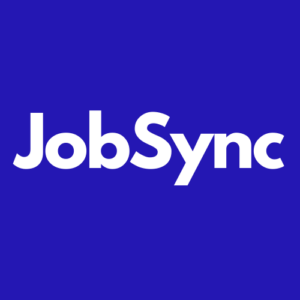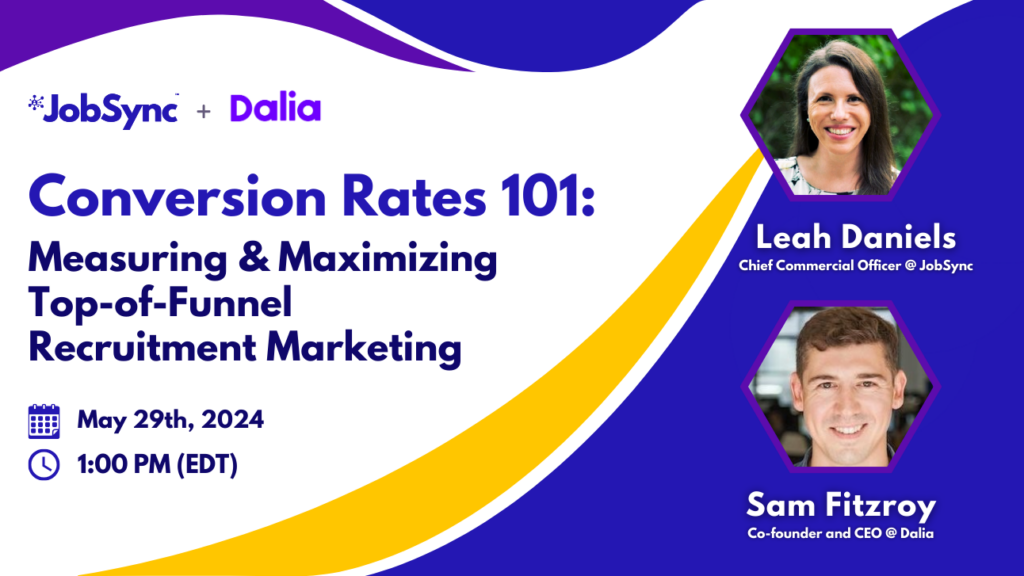Be the first to know when we have an announcement. Sign up for our newsletter!
Tim Sackett joined Leah Daniels and Kevin Grossman on The Talent Sync podcast to continue the age-old debate – does recruiting belong in HR?
Two things to note: first, no, it doesn’t – but then again, HR doesn’t really belong in HR either, but that is for another day, and second, Recruiting needs to be rebranded to Hiring.
Companies have Chief Revenue Officers, not Chief Business Development Officers, not Chief Sales Officers (although we do see that occasionally). Business development is the start, sales is the process, and revenue is the outcome. It’s the lifeblood of the business.
Recruiting needs a rebrand. Recruiters are Hiring Professionals, and their leader is a Chief Hiring Officer – CHO.
We need Hiring leadership. Not recruiting, not talent attraction, not talent. Hiring.
As revenue is the lifeblood, hiring is the skeleton—the foundation of the business. The only metric the board and stakeholders care about is how the business is doing against the Hiring Plan. Recruiting and talent attraction are the acts of finding and taking talent through the process, yet no one asks how the recruitment process is going; they care about the outcome: hiring.
By focusing on the process rather than the outcome, we incentivize the wrong action. We have developers who create code, but the CTO is responsible for the outcome and technology. Sales and business development create opportunities and mind the process of the sale, but the CRO owns the outcome, revenue. Recruiting needs to modernize to align with the rest of the organization, and it starts with putting the outcome front and center.
Tune in to this episode of The Talent Sync Podcast by clicking here!

Candidates Are Exhausted
By focusing on the process and not on the outcome, recruiting has become a necessary evil, stuck as an inefficient process that rarely leads to an outcome (we had Dr. Solange Charas join us in last month’s Roundtable to discuss this). Recruiting is a process that most candidates understand is inefficient but yet have little real understanding of why it is so difficult.
Companies add more and more tools to “help” with candidate experience, and so do candidates, with an explosion of AI and apply tools. Yet, the process isn’t better. Instead, we have an arms race of tools, each helping individually while making the overall situation worse.
Candidates want jobs. They need jobs. And they are tired of creating ATS accounts and filling in their information six times to apply for one job. Candidates have reached a level of exhaustion, and candidate application fatigue is very real.
While the Twitterverse (Xer-verse?) rails on about the hoops that candidates are asked to jump through, this is a microcosm of the broader fatigue the humans, our workers, our colleagues, and our neighbors are feeling across the board.
- Tipping Fatigue
- Media Fatigue
- Politics Fatigue
- Data Breach Fatigue
- Corporate Bullsh*t Fatigue
We have a global epidemic of fatigue.
At the end of April, the FTC ruled that the majority of Non-Competes would be unenforceable by the end of 2024. Hours later, not days, not weeks, but hours later, the Chamber of Commerce sued the FTC to block the roll-out. Employees are blocked from working in their profession of choice by the overly broad way in which most companies apply their non-competes, usually with an eye to protect their intellectual property and keep competitors away from their employees. Yet the damage goes both ways; companies are equally blocked from hiring the talent they want and need for the same reason. Thus, everyone loses, with individual workers losing the most in potential wages. This arguably keeps wages 30% lower on an aggregate basis.
It is not the only time that the US government has supported businesses to keep wages low. Most restaurant workers are paid not on the federal minimum wage but on the federal tippable wage of $2.13 per hour, which hasn’t been updated since 1991. Restaurant workers can’t live on that wage, but business owners are afraid of increasing prices. Along with updated point-of-sale systems, buyers are asked to tip on nearly everything. This is driving tipping down and causing the introduction of service charges to cover livable wages. It’s a vicious cycle that most workers understand at the micro level but lack the broader understanding of the macro level impact on the economy and jobs.
And people need jobs. There is a new group of exhausted people – our 2024 graduating students.
Words Are Funny
As we enter graduation season, I often reflect on the word ‘commence’, to begin. Yet, commencement is to celebrate the completion of a degree or to end. Many students are watching their graduation ceremonies rapidly disappear, similar to their last graduation in 2020, a graduation that wasn’t. As protests threatened to shut down graduation for many seniors, you can’t help but wonder if commencement for this particular group is not to find the end but a new beginning.
A new beginning that starts with a job search, employment offers, employment contracts, and a sudden realization that their degree might not have mattered quite as much as they have been led to believe.
For many, their first introduction to employment runs through Indeed, ZipRecruiter, or Linkedin. If you think your top choice college acceptance rate of 10% was difficult – wait until they are the 300th applicant in a pool of candidates. For all the attention regarding the lack of people to work, new grads are discovering the high bar to getting a call-back requires experience, which they don’t have yet, for compensation that is barely a livable wage in most major cities.
To top it all off, we stopped investing in early career development as we doubled and tripled down on skills development, always from a perspective of growing the skills workers already have, not helping the new entrants to the workforce gain their first skills, the ones their college education failed to provide. We have to remember that we created this system in which you must have the experience to get a job, but we have provided no way of being able to actually get that experience.

Recruiters Are Exhausted, Too.
You can’t build a candidate experience worth raving about without considering the recruiter’s experience.
- The whiplash of the last three-plus years
- Little progress in improving recruiters’ day-to-day
- Hundreds of applicants or none at all, with little in between
- The continual fear of layoffs as the hiring market cools considerably
- And last but not least, recruiters are the first wave of layoffs when the company no longer has ambitious hiring plans
Recruiters need help. They need technology and processes that support them, not another shiny object that could help them if it weren’t completely out of their current process and swing. Much like sales teams have support from revenue operations and technology, recruiters need help to reach their revenue goals, too.
They need an operations function and they need technology that supports their day-to-day, without interruption and exhaustive change management. They need Hiring Operations, an outcome-focused function, with the technology that brings those shiny toys into a unified system – they need a hiring operations platform.
We agree – let us know how we can help.
Get Involved: Transparency and Removing Conflicts of Interest
On the concept of hiring being the skeleton of the organization, we are working with CareerXRoads this month on a research project titled “Addressing Real and Perceived Conflict of Interest (COI) in Talent Acquisition.” You might say we are trying to put a bit more backbone into the ecosystem.
We support this research because we believe that transparency is rarely wholly present in our market and that by shining a light on some of the less-than-desirable business practices, the market will be more productive. Employers will be able to achieve their hiring goals and grow their companies more readily.
We’d like you to participate. Here are the details:
What is CXR?
- CXR is a community of employers who support each other and the mission of improving hiring practices.
What is involved in being on a CXR research panel?
- One hour a week, for one month, asynchronously.
- Each Monday, a key question/discussion topic is introduced, and you’ll have a few days to add to the discussion.
- Mid-week a few poll questions are added to get you thinking on different aspects of the week’s theme.
- You’ll have one wrap-up call to attend with your fellow panelists.
Can anyone participate in the panel?
- Yes! You don’t need to be a member to participate.
This particular research topic is likely to include discussions on:
- Clarifying relationships between TA Solutions Providers, Analysts, and Consultants
- Navigating Conflict of Interest between Employers and Candidates/Employees
- Increasing Transparency at Industry Conferences and Events
- Fostering Trust in TA & HR through Transparency Initiatives
I hope you’ll consider joining us. If you do, here’s how:
- Click here to set up your profile on our research platform.
- Jump into the platform and introduce yourself.
Alex Murphy, CEO, JobSync
Leah Daniels, Chief Commercial Officer at JobSync, joined Sam Fitzroy, Co-founder and CEO at Dalia, for a fun, candid look at the conversion rates that matter in your recruitment marketing strategy. In today’s hiring landscape, understanding the most important conversion rates throughout your recruiting funnel, how to measure them, and how to improve them is the key to attracting top talent without spending a fortune. Watch the recording now!



